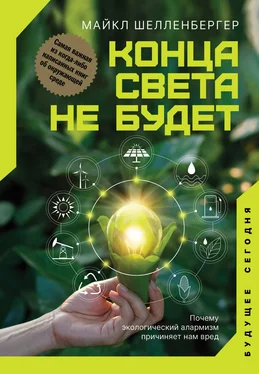Alastair McNeilage (primatologist, Wildlife Conservation Society) in discussion with the author, February 5, 2015.
Alastair McNeilage (primatologist, Wildlife Conservation Society) in discussion with the author, February 5, 2015.
Alastair McNeilage (primatologist, Wildlife Conservation Society) in discussion with the author, February 5, 2015.
Alastair McNeilage (primatologist, Wildlife Conservation Society) in discussion with the author, February 5, 2015.
Alastair McNeilage (primatologist, Wildlife Conservation Society) in discussion with the author, February 5, 2015.
Alastair McNeilage (primatologist, Wildlife Conservation Society) in discussion with the author, February 5, 2015.
Alastair McNeilage (primatologist, Wildlife Conservation Society) in discussion with the author, February 5, 2015.
Michael J. Kavanagh (journalist) in discussion with the author, November 29, 2014.
Amy Yee, “The Power Plants That May Save a Park, and Aid a Country,” New York Times, August 30, 2017, https://www.nytimes.com.
Amy Yee, “The Power Plants That May Save a Park, and Aid a Country,” New York Times, August 30, 2017, https://www.nytimes.com.
“History of Hoover,” Arizona Power Authority, accessed January 20, 2020, http://www.powerauthority.org/about-us/history-of-hoover
Elizabeth Paton, “Extinction Rebellion Takes Aim at Fashion,” New York Times, October 6, 2019, https://www.nytimes.com.
Olivia Petter, “Extinction Rebellion: ‘Why We’re Targeting London Fashion Week,” The Independent, September 12, 2019, https://www.independent.co.uk.
Elizabeth Paton, “Extinction Rebellion Takes Aim at Fashion,” New York Times, October 6, 2019, https://www.nytimes.com.
Elizabeth Paton, “Extinction Rebellion Takes Aim at Fashion,” New York Times, October 6, 2019, https://www.nytimes.com.
XR Boycott Fashion, “On Friday 26th of July, we wrote to the British Fashion Council begging them to cancel London Fashion Week,” Facebook, August 4, 2019, https://www.facebook.com/XRBoycottFashion/posts/113234513352496?__tn__=K-R.
“Pulse of the Fashion Industry,” Global Fashion Agenda, Boston Consulting Group and Sustainable Apparel Coalition, 2019, accessed October 26, 2019, https://www.globalfashionagenda.com/pulse-2019-update.
Elizabeth Paton, “Extinction Rebellion Takes Aim at Fashion.”
Sarah Anne Hughes, “Greenpeace Protests Barbie at Mattel Headquarters,” «The Washington Post», June 8, 2011, https://www.washingtonpost.com.
Sarah Anne Hughes, “Greenpeace Protests Barbie at Mattel Headquarters,” «The Washington Post», June 8, 2011, https://www.washingtonpost.com.
Steven Greenhouse, “Nike Supports Women in Its Ads but Not Its Factories, Groups Say,” New York Times, October 26, 1997, https://www.nytimes.com.
Jeff Ballinger, “Nike, Sexual Harassment and the ‘Corporate Social Responsibility’ Racket: How the Company Shut Down the New York Times,” Washington Babylon, November 9, 2017, https://washingtonbabylon.com.
Jeff Ballinger, “Nike, Sexual Harassment and the ‘Corporate Social Responsibility’ Racket: How the Company Shut Down the New York Times,” Washington Babylon, November 9, 2017, https://washingtonbabylon.com.
“Statement on 2019 Copenhagen Fashion Summit,” Union of Concerned Researchers in Fashion, May 5, 2019, accessed October 26, 2019, http://www.concernedresearchers.org/ucrf-on-2019-copenhagen-fashion-summit. See also, “The changes we are seeing from some brands remain extremely superficial,” said one XR activist. Paton, “Extinction Rebellion Takes Aim at Fashion.”
Syarifah Nur Aida (journalist, Ipeh) in discussion with the author, June 8, 2015.
Suparti (factory worker) in discussion with the author, June 8–9, 2015.
Suparti (factory worker) in discussion with the author, June 8–9, 2015.
Xiaoping Liu, Guohua Hu, Yimin Chen et al., “High-Resolution Multitemporal Mapping of Global Urban Land Using Landsat Images Based on the Google Earth Engine Platform,” Remote Sensing of Environment 209 (May 2018): 227–39, https://doi.org/10.1016/j.rse.2018.02.055.
Christopher D. Elvidge, Benjamin T. Tuttle, Paul C. Sutton et al., “Global Distribution and Density of Constructed Impervious Surfaces,” Sensors 7, no. 9 (2007): 1962-79, https://dx.doi.org/10.3390%2Fs7091962.
FAO finds reforestation in Europe, Asia, North America, and the Caribbean. Central America, South America, Africa, and Oceania are still deforesting. The global rate of deforestation has been cut by over half since 1990, from 7.3 million to 3.3 million hectares per year as reforestation accelerated. “Data,” FAO.
“Data,” Food and Agriculture Organization of the United Nations, http://www.fao.org/faostat/en/#data. Russell Warman, “Global Wood Production from Natural Forests Has Peaked,” Biodiversity and Conservation 23, no. 5 (2014): 1063–78, https://doi.org/10.1007/s10531-014-0633-6.
FAO projects that the amount of arable land and permanent crop area will stay nearly flat through 2050, as detailed in its report on the subject. Nikos Alexandratos and Jelle Bruinsma, “World Agriculture Towards 2030/2050: The 2012 Revision,” ESA Working Paper no. 12-03, Agricultural Development Economics Division, Food and Agriculture Organization of the United Nations, June 2012, http://www.fao.org/3/a-ap106e.pdf.
Per FAO, global per capita kilocalorie production was 2,196 in 1961 and 2,884 in 2013. Along with the global population increase from 3.1 billion to 7.2 billion between 1961 and 2013, global food production has tripled. The amount of global land used for agriculture increased from 4.5 billion to 4.8 billion hectares over the same period. “Data,” FAO.
Per FAO, global per capita kilocalorie production was 2,196 in 1961 and 2,884 in 2013. Along with the global population increase from 3.1 billion to 7.2 billion between 1961 and 2013, global food production has tripled. The amount of global land used for agriculture increased from 4.5 billion to 4.8 billion hectares over the same period. “Data,” FAO.
Per FAO, global per capita kilocalorie production was 2,196 in 1961 and 2,884 in 2013. Along with the global population increase from 3.1 billion to 7.2 billion between 1961 and 2013, global food production has tripled. The amount of global land used for agriculture increased from 4.5 billion to 4.8 billion hectares over the same period. “Data,” FAO.
Changes in Farm Production and Efficiency: A Summary Report, United States Department of Agriculture, Statistical Bulletin 233 (Washington, DC: USDA, 1959), 12–13.
Читать дальше












